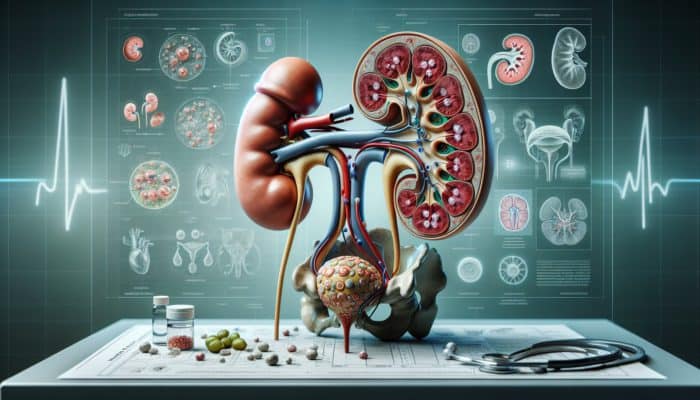Enhancing Manual Therapy with Dry Needling
Physical therapists, chiropractors, and others in the medical field employ dry needling as a therapeutic technique to treat musculoskeletal pain and movement disorders. The process involves putting tiny needles into specific pressure areas on the body to alleviate stress and pain. Western medicine and neurophysiology, not traditional Chinese medicine, provide the basis of dry needling, setting it apart from acupuncture.
Dry needling's main objective is to find and eliminate trigger points and hyperirritable regions of skeletal muscle that can cause palpable nodules or taut bands. These trigger points are often the culprits behind localised and transferred discomfort, limited range of motion, and muscular weakening. However, dry needling offers hope and optimism by relieving pain and increasing functional capability by releasing these trigger points.
Dry needling, often a vital component of an all-encompassing regimen that incorporates physical therapy, exercise, and other forms of treatment, is a safe and effective procedure. It should only be performed by skilled and licensed healthcare practitioners who have completed specialised education and guarantee the patient's well-being and security. Rest assured, patients will be kept informed about the procedure's possible benefits and hazards before undergoing therapy.
This approach has proven helpful for addressing musculoskeletal pain and can be combined with other manual therapy interventions.
Main Points
- Dry needling is a technique for relieving pain and improving function that involves inserting thin needles into muscle trigger points.
- The science behind dry needling involves stimulating the nervous system and promoting the release of natural painkillers to reduce muscle tension and improve blood flow.
- Integrating dry needling with manual therapy can enhance treatment outcomes by addressing musculoskeletal pain's soft tissue pain components.
- Dry needling targets muscle trigger points to relieve pain and improve the range of motion, making it a valuable tool for managing muscle pain.
- Combining dry needling with joint mobilisation can effectively address musculoskeletal Pain by targeting tissue and joint structures for comprehensive treatment.
 The Science Behind Dry Needling: How it Works to Relieve Pain
The Science Behind Dry Needling: How it Works to Relieve Pain
Local Twitch Rpainnse and Muscle Relaxation
When a needle is put into a trigger point, it can produce a local twitch reaction, a reflexive contraction of the muscles surrounding the needle. This twitch reaction is believed to alleviate muscle tension and end the vicious cycle of dysfunction and discomfort.
Pain Relief and Neurophysiological Effects
Inserting the needle can trigger the production of endorphins, the body's natural painkillers, resulting in rapid pain alleviation and reduced muscular soreness. Furthermore, dry needling may have a neurophysiological effect on the nervous system by modifying sensory nerve activity and lowering pain signal transmission to the brain. This can assist in desensitising the nervous system and reduce the experience of Pain.
Local Blood Fpainand Tissue Healing
Dry needling, which causes microtrauma at the insertion site, can improve local blood flow and tissue repair. This can boost the area's oxygen and nutrients while removing metabolic waste products. The science behind dry needling reveals that treatment can affect the body, including pain reduction and increased function.
Integrating Dry Needling with Manual Therapy: Enhancing Treatment Outcomes
Combined with manual therapy procedures such as joint mobilisation, soft tissue mobilisation, and stretching dry needling, musculoskeletal Pain and dysfunction pain treatment outcomes can be improved. Manual therapy seeks to restore normal joint and soft tissue mobility, whereas dry needling targets trigger points and muscle tension. Combining these approaches allows healthcare practitioners to address the mechanical and neuromuscular aspects of pain and movement limitations.
A physical therapist may employ manual treatment techniques to increase joint mobility and then apply dry needling to alleviate trigger points in the muscles if a patient exhibits symptoms of shoulder pain on top of limited mobility caused by a rotator cuff injury. This comprehensive approach can result in more significant pain relief, range of motion, and functional activities than either technique alone. Furthermore, combining dry needling with manual therapy can assist in extending the effects of treatment by addressing both the underlying musculoskeletal dysfunction and the resulting Pain.
Healthcare providers must understand manual therapy and dry needling techniques well to incorporate them effectively into treatment programs. Equally important is patient education, which is critical in helping people understand why these therapies are used and what to expect during treatment. Combining these treatments allows healthcare practitioners to give more complete therapy to patients suffering from musculoskeletal discomfort.
Targeting Trigger Points: Using Dry Needling for Muscle Pain Relief
Dry needling targets muscle trigger points to relieve muscle discomfort and dysfunction. Trigger points are hyperirritable areas in skeletal muscle accompanied by palpable nodules or taut bands. These websites can cause localised and transferred discomfort, restricted range of motion, and muscle atrophy.
Healthcare providers are vital during the dry needling procedure. Placing tiny needles directly into trigger points creates a local twitch response, releasing muscle tension and relieving patients. For example, if a patient appears to have low back pain exacerbated by prolonged sitting, a physical therapist's expertise may find trigger points in the paraspinal muscles causing the suffering. The therapist can help alleviate Pain and tension by dry-needling these locations.
Furthermore, treating trigger points with dry needling can enhance muscular flexibility and function, enabling patients to have increased mobility and carry out their everyday activities with reduced discomfort. A thorough evaluation by healthcare experts is necessary to identify trigger points and assess the suitability of dry needling as a treatment. Patients should also be told what to expect throughout their dry needling therapy and any potential side effects or warnings.
Healthcare providers can effectively treat muscular discomfort and dysfunction by targeting trigger points with dry needling, a proven and effective therapy.
 Combining Dry Needling with Joint Mobilization: Addressing Musculoskeletal Pain
Combining Dry Needling with Joint Mobilization: Addressing Musculoskeletal Pain
Dry needling can be used with joint mobilisation procedures to effectively treat musculoskeletal pain and movement limitations and target trigger points within muscles. Joint mobilisation is the application of targeted pressures to a joint to restore its natural range of motion and alleviate Pain. By integrating physical needling into joint mobilisation therapies, healthcare professionals can effectively target muscular and articular aspects of musculoskeletal disorders.
For instance, when a patient experiences knee pain caused by patellofemoral dysfunction, a physical therapist may employ joint mobilisation techniques to enhance the movement of the patella. Additionally, they may utilise dry needling to alleviate trigger points within the quadriceps muscles. This holistic method can relieve Pain and enhance fusional tasks, including walking, stair climbing, and squatting. Healthcare practitioners can offer more comprehensive patient care by addressing dysfunction's joint and muscular components.
Healthcare providers must comprehend joint mobilisation and dry-needling procedures to seamlessly incorporate them into treatment programs. Equally important is patient education, which promotes self-care and long-term health. It helps individuals understand the reasons for these interventions and the expected outcomes of the treatment. By integrating these methodologies, medical practitioners can offer more holistic therapy for individuals experiencing musculoskeletal discomfort, fostering a sense of responsibility and commitment to their patients' long-term health.
Addressing Neuropathic Pain: The Role of Dry Needling in Nerve Pain Management
Understanding Neuropathic Pain
Neuropathic Pain is a multifaceted disorder that arises from harm or impairment of the neurological system. It leads to sensations of shooting or burning, numbness, or tingling. Neuropathic pain trigger points can be found either along nerve pathways or in muscles supplied by the afflicted nerves.
Addressing Sciatica with Dry Needling
For instance, individuals with sciatica may experience neuropathic Pain due to compression or irritation of the sciatic nerve. By targeting trigger points along the sciatic nerve pathway, healthcare professionals can help alleviate symptoms such as leg pain and numbness. This approach can reduce neuropathic pain and improve function by releasing tension in these nerve-related trigger points.
Effective Use of Dry Needling for Nerve Pain Management
To utilise dry needling as an effective method for managing nerve pain, healthcare providers must comprehensively comprehend nerve anatomy and neuropathic pain syndromes. Patients should also be educated about the anticipated treatment process and any possible adverse effects or precautions associated with applying dry needling on nerve-related trigger points. Healthcare providers can effectively alleviate nerve-related symptoms by utilising dry needling to target neuropathic Pain.
 Patient Education and Safety: Exploring the Benefits and Risks of Dry Needling in Manual Therapy
Patient Education and Safety: Exploring the Benefits and Risks of Dry Needling in Manual Therapy
Integrating dry needling into manual therapy treatments requires patient education. Individuals undergoing dry needling should comprehensively understand the therapy's potential advantages and hazards. Healthcare providers should allocate sufficient time to elucidate the mechanism of dry needling, provide a comprehensive overview of the treatment process, and disclose any possible adverse effects, such as transient discomfort or discolouration at the areas of needle insertion.
Moreover, patient education about safety measures associated with dry needling is crucial. This includes refraining from intense physical exertion soon after the procedure and promptly reporting abnormal or protracted symptoms. Patients should know that while dry needling can effectively treat musculoskeletal discomfort, it may not suit every individual or condition. By enhancing patient education on dry needling, healthcare providers can help patients feel more comfortable during sessions and make informed decisions about their treatment options, alleviating anxiety and improving the treatment experience.
Furthermore, establishing transparent communication between patients and healthcare practitioners is critical to effectively handling any issues or enquiries regarding dry needling. Incorporating patient education is essential for ensuring safety and achieving favourable effects when integrating dry needling into manual therapy procedures. Ultimately, dry needling is a beneficial method that can effectively target musculoskeletal pain and movement limitations as a complete manual treatment strategy component.
There is room for improvement in patients' care from healthcare practitioners by focusing on trigger points inside muscles and combining this approach with other manual therapy procedures like joint mobilisation. In addition, dry needling can specifically target nerve-related trigger sites along damaged pathways to relieve neuropathic Pain. Providing patients with comprehensive information is essential to enable them to comprehend the potential advantages and drawbacks of dry needling as a component of their treatment regimen.
A thorough comprehension of the mechanics and patient safety issues is of the utmost importance when integrating dry needling into manual therapy procedures to alleviate musculoskeletal pain effectively.
What is dry needling?
Dry needling is used by manual therapists, such as physical therapists and chiropractors, to treat musculoskeletal pain and movement impairments. It involves inserting thin needles into trigger points or tight bands of muscle to stimulate a healing response.
How does dry needling work?
Dry needling targets trigger points, which are hyperirritable spots in the skeletal muscle associated with palpable nodules in taut bands of muscle fibres. Inserting a needle into these trigger points can help release tension and improve blood flow to the area, ultimately reducing Pain and enhancing pain.
Is dry needling the same as acupuncture?
While dry needling and acupuncture involve using thin needles, they are techniques with different underlying principles. Acupuncture is based on traditional Chinese medicine and focuses on restoring energy flow (qi) through the body's meridians. In contrast, dry needling is based on Western medicine principles and targets specific musculoskeletal issues.
What conditions can dry needling help with?
Dry needling can treat a variety of musculoskeletal conditions, including—but not limited to—neck pain, back pain, shoulder pain, hip pain, knee pain, and headaches. It can also address muscle tightness, joint stiffness, and movement impairments.
Is dry needling safe?
Dry needling is generally considered safe when performed by a trained and licensed manual therapist. However, as with any medical procedure, there are potential risks and side effects, such as bruising, soreness, and, very rarely, infection. It is essential to seek treatment from a qualified and experienced practitioner.
How many sessions of dry needling are typically needed?
The number of dry needling sessions needed can vary depending on the individual and the specific condition being treated. Some people may experience significant improvement after just one session, while others may require multiple sessions to achieve the desired results. Your therapist can guide you through the recommended treatment plan based on your needs.
References:
Trigger Point Dry Needling. https://www.strattonspine.com/services/trigger-point-dry-needling/
Health Benefits of Physiotherapy | How We Can Help You. https://www.corefitness.com.sg/benefits-of-physiotherapy-clinical-pilates/


























58 Comments
I have to say, the idea of sticking tiny needles into my body has always felt like something out of a horror movie—only in this case, the villain is my own muscle tension! It’s fascinating how dry needling has stepped into the spotlight with its roots firmly planted in Western medicine while leaving the ancient mystical elements of acupuncture behind. Who knew that a tiny needle could save me from the clutches of my own trigger points?
It’s interesting how something like dry needling can evoke such strong imagery, isn’t it? Your description of the tiny needles as a protagonist in a personal battle against muscle tension really captures the essence of what many people experience. It’s almost like we’re in this ongoing dialogue with our bodies.
Your thoughts on dry needling really capture the blend of curiosity and apprehension many people feel. It’s interesting to see how dry needling, while a more recent development in pain management, has carved its niche in the realm of bodywork. It certainly approaches the body with a clinical perspective, focusing on muscle knots or trigger points without diving into the philosophical or energy-based principles of acupuncture.
It’s interesting how our perceptions of something like needles can be so influenced by movies and media, isn’t it? That horror movie imagery can really stick with us. It’s great that you’re finding a way to switch the narrative from fear to healing. Dry needling does have that unique quality—it’s all about the science of relieving tight spots in our muscles, which can often feel like a very personal battle.
You’ve captured that tension between fear and relief perfectly. It’s interesting how something that seems daunting, like tiny needles, can actually lead to such profound benefit. In many ways, dry needling is like a bridge between the scientific and the intuitive—drawing on the precision of Western techniques while navigating the complex landscape of our bodies.
You’ve really captured an interesting paradox with dry needling. It’s true that what feels intimidating at first—those tiny needles—can lead to such a notable shift in how we feel. I think this process not only taps into the physical but also strikes a chord with the psychological aspects of healing. There’s something profound about voluntarily entering into discomfort for the sake of long-term relief.
You’ve hit the nail on the head with that observation about dry needling. It really is a curious mix of fear and relief, isn’t it? When you see those needles, it can be a bit nerve-wracking. But once you’re in the thick of it, something shifts. That initial tension tends to fade as your body starts responding to the treatment.
It’s interesting how our perceptions shape our views on different therapies, isn’t it? I can totally relate to that initial horror movie vibe—I think a lot of us feel that way about needles in general. It’s intriguing how dry needling has carved out its place in the spotlight, especially when you consider the contrast with acupuncture, which comes from such a rich tradition of holistic healing.
You’re spot on about perceptions playing such a huge role in how we view therapies. That needle fear is pretty common—it’s amazing how that initial reaction can shape our willingness to try something new. Dry needling does feel like it’s been a bit of a trend lately, especially compared to acupuncture, which has such deep roots in ancient practices.
I completely get what you mean about the whole needle thing. There’s definitely an initial reaction that can feel a bit unsettling, especially when we think of needles in a medical context versus acupuncture’s more holistic vibe. It’s interesting how dry needling has carved out its own niche, focusing more on muscle tension and pain relief rather than the broader wellness approach of acupuncture.
If you’re curious about how needles can work wonders beyond just muscle relief, there’s this intriguing approach to rejuvenating the face that’s worth exploring.
‘Acupuncture: The Key to Facial Rejuvenation’
https://mcrtherapies.co.uk/acupuncture-the-key-to-facial-rejuvenation/.
You’ve touched on something that often gets overlooked in conversations about acupuncture and dry needling. The initial hesitation many people feel about needles is definitely understandable, especially when we usually associate them with medical procedures that can feel a bit intimidating. Traditional acupuncture does carry a much broader, holistic perspective that contrasts sharply with the targeted, more clinical approach of dry needling. It’s like comparing apples and oranges.
It’s interesting how dry needling often gets compared to acupuncture, given their different foundations. I’ve experienced both, and while they certainly share the goal of addressing pain, the techniques felt worlds apart for me. I found dry needling particularly effective for my chronic shoulder pain, as it seemed to target those tight points directly, which brought immediate relief that I hadn’t achieved with other methods.
It’s fascinating how our experiences can shape our understanding of these techniques. I completely agree that dry needling and acupuncture feel like they come from different worlds, despite both aiming to alleviate pain. Your mention of targeting those tight points resonates with me; it’s almost like having a direct line to the muscle tension that’s been holding us back.
I recently came across some insights on using acupuncture as a tool for managing fears, which I found quite enlightening, especially given how different it is from my experiences with dry needling.
‘Acupuncture: A Dynamic Approach to Overcoming Fears’
https://mcrtherapies.co.uk/acupuncture-a-dynamic-approach-to-overcoming-fears/.
I’ve always found dry needling fascinating, especially since it’s such a different approach from acupuncture, even though both use needles. I remember going for physical therapy after an injury, and my therapist suggested trying dry needling for my persistent muscle tightness. At first, I was skeptical, but I’m glad I gave it a shot.
It’s interesting how perceptions can change after trying something like dry needling. A lot of people have that initial skepticism, especially since the concept of “needles” can seem a bit daunting. It’s reassuring to hear that it worked for you.
You’re right; the initial skepticism is definitely something I encountered too. The idea of needles poking into my skin was a little off-putting at first, but once I tried it, my perspective shifted. It wasn’t as scary as it sounded. The relief I experienced afterward made me wonder how much of our hesitation around certain therapies comes from the unknown.
It’s interesting how dry needling and acupuncture both use needles but come from such different philosophies and practice methods. I remember hearing about the distinction when I first learned about dry needling; one focuses more on trigger points and muscle tension, while the other is rooted in traditional Chinese medicine. I can see why there might be skepticism at first—using needles can feel a bit daunting if you’re not familiar with it.
You touch on a really interesting aspect of both practices. It’s true that dry needling and acupuncture do have distinct philosophies at their cores. With dry needling, the approach is very much about addressing specific muscle tension and trigger points, often linked to pain relief and physical rehabilitation. Practitioners look at the muscle’s mechanics and how to relieve tightness, which can be incredibly effective for many people.
You bring up a really fascinating point about the core philosophies behind dry needling and acupuncture. It’s interesting how they both reflect different ways of understanding the body and its pain. With dry needling being so focused on the physical aspects, it really emphasizes how much our muscle mechanics can impact our overall wellbeing. I’ve seen firsthand how effective it can be, especially for athletes dealing with muscle strain or recurring injuries.
You raise an intriguing point about the distinct philosophies behind dry needling and acupuncture. I think it’s fascinating how dry needling zeroes in on those very specific muscle tensions and trigger points, almost like a surgical strike for muscle issues. Many people I’ve spoken to find it can provide quick relief, especially when dealing with chronic pain from activities or injuries.
You’ve captured the essence of dry needling beautifully. It’s interesting how its focus on specific muscle tensions makes it feel so targeted and effective. Many people appreciate that immediate relief, especially when dealing with constant discomfort from daily activities or past injuries. It seems to resonate deeply with those who prefer straightforward solutions to their pain.
“Absolutely! It’s amazing how targeted approaches like dry needling can transform pain management. If you’re curious to learn more about its benefits, check out this resource for deeper insights!”
https://mcrtherapies.co.uk/fb
I find the distinction between dry needling and acupuncture quite fascinating, particularly how dry needling taps into Western neurophysiology to address specific musculoskeletal issues. As someone who has experienced chronic pain, I can speak to the frustration of trying various treatments without success. When I finally tried dry needling, it was a game-changer—not just in reducing pain but also in reconnecting with my body’s movement capabilities.
You’ve highlighted something really important about the experience of chronic pain and the journey to find effective treatments. Dry needling, with its foundation in Western neurophysiology, offers a unique lens through which we can understand pain management. It’s intriguing how it specifically targets muscle dysfunction by stimulating trigger points, often bringing immediate relief for many.
I’m glad to hear that dry needling has made such a positive impact on your experience with chronic pain. If you’re interested in exploring more about the benefits of dry needling and how it might help others, check out this insightful resource!
https://mcrtherapies.co.uk/ig
The distinction you’ve made between dry needling and acupuncture is an important one, particularly as both techniques target similar issues of pain and muscle tension but do so through different philosophical and physiological frameworks. I’ve personally experienced the benefits of dry needling in complementing my physical therapy treatments for chronic shoulder pain. The immediate relief from trigger points allowed me to engage more actively in rehabilitation exercises.
This is a fascinating dive into the world of dry needling! I have to admit, the first time I heard about it, I pictured something resembling a medieval torture device rather than a modern therapeutic tool. But after experiencing it during physical therapy for some stubborn back pain, I can confidently say it felt more like a magical spell being cast than anything else—out with the pain and in with the movement!
Your exploration of dry needling as a complementary technique within manual therapy certainly raises important considerations regarding its role in managing musculoskeletal pain. I find it fascinating how dry needling, often misunderstood as merely a form of acupuncture, stands apart by grounding itself in Western medical principles and neurophysiology. It sheds light on our ongoing evolution in understanding muscle function and pain management.
You’ve touched on something really interesting about the distinction between dry needling and acupuncture. Many people lump them together, but the grounding in Western medical principles is definitely a key differentiator. Dry needling targets muscle dysfunction and pain directly, often focusing on specific trigger points, while acupuncture works from a broader perspective rooted in traditional Chinese medicine.
It’s great to see that this topic resonates with you, especially the distinction between dry needling and acupuncture. You’re spot on in recognizing that dry needling has its backbone in Western medical principles and a sound understanding of neurophysiology. That’s a huge part of what makes it such an intriguing technique to consider within the broader landscape of pain management and manual therapy.
This exploration of dry needling really highlights an interesting intersection in modern therapy practices. It’s fascinating how techniques like dry needling, which might initially seem unconventional, are becoming integral to therapeutic regimens. I’ve personally experienced the relief that comes from addressing those stubborn trigger points. It’s incredible how something so seemingly simple can lead to such profound improvements in mobility and pain reduction.
Your experience really captures the essence of why techniques like dry needling have gained traction in the world of physical therapy. It’s surprising how something that seems so straightforward can have such a substantial impact on how we feel and function. The body has many complex systems, and for many individuals, chronic pain and movement restrictions can be tied to specific muscle patterns and trigger points.
I completely agree with you; the rise of techniques like dry needling really does illustrate an intriguing evolution in the therapeutic landscape. When I first encountered it, I was skeptical about how a simple needle could make such a difference, but experiencing that relief firsthand really opened my eyes. It’s interesting to reflect on how our understanding of pain management is shifting away from just traditional methods.
It’s really interesting how techniques like dry needling have carved out their place in the broader conversation about modern therapy. Your experience with trigger points resonates with many; they can be such stubborn little areas that disrupt overall well-being. It’s intriguing to think about how modalities that might seem a bit out of the box, like dry needling, are being integrated into more traditional practices, blending Eastern and Western approaches to health.
I completely agree with you; it’s fascinating how techniques like dry needling are finding a niche within the larger discussion on modern therapy. It feels like we’re starting to see a more holistic view of health, where methods once considered fringe are gaining recognition.
I recently came across a piece that dives into shoulder tendonitis and its causes, offering some effective treatments that might blend nicely with those innovative techniques like dry needling you mentioned.
‘Shoulder Tendonitis Causes and Effective Treatments’
https://mcrtherapies.co.uk/shoulder-tendonitis-causes-and-effective-treatments/.
You bring up a fascinating aspect of how various therapeutic techniques are finding their place within the broader health conversation. Dry needling certainly fits into that narrative of merging Eastern and Western practices. It’s interesting to consider how something that might have once seemed unconventional is now gaining recognition in the context of modern therapy.
It’s fascinating how dry needling emphasizes the interconnectedness of our body’s muscular system. Personally, I’ve seen how addressing trigger points can lead not just to pain relief but also to improvements in athletic performance. When my physical therapist incorporated dry needling into my treatment for a recurring shoulder issue, it truly opened up my range of motion and allowed me to engage in activities I love without discomfort.
It’s great to hear how dry needling has made such a difference for you. Addressing those trigger points really reveals the complexities of our body’s muscular system. It’s interesting to see how these small, often overlooked areas can have a ripple effect on performance and mobility.
“I’m glad to hear about your positive experience! If you’re curious to learn more about how dry needling can enhance performance and recovery, check out this helpful resource.”
https://mcrtherapies.co.uk/fb
It’s fascinating how dry needling complements traditional manual therapy techniques, especially in our evolving understanding of musculoskeletal health. I’ve seen firsthand how addressing those stubborn trigger points can transform a patient’s recovery journey. It’s intriguing to consider the potential of combining dry needling with other modalities, like mindfulness or movement therapies, to enhance overall healing.
It’s great to hear you mention the synergy between dry needling and traditional manual therapy. There’s something really powerful about how these techniques can work together to address those stubborn trigger points. When we look at the body as a complex system, it makes sense that using multiple approaches can unlock pathways to recovery that might not be accessible through just one method alone.
“I completely agree! It’s exciting to explore the synergy between dry needling and other healing practices. If you’re interested in learning more about integrating these techniques, check out this resource for further insights!”
https://mcrtherapies.co.uk/ig
This exploration of dry needling’s role in alleviating musculoskeletal pain raises several interesting points about the intersection of physical therapy and modern medical practices. I’ve found that integrating dry needling with other modalities like manual therapy or exercise not only enhances treatment outcomes but also empowers patients to take a more active role in their recovery.
I appreciate your perspective on dry needling and its integration with other treatment modalities. It makes complete sense that combining techniques like manual therapy or exercise could lead to more effective outcomes. This holistic approach aligns well with the growing emphasis on patient-centered care in physical therapy, where empowering individuals to take an active role in their recovery can lead to more sustainable health improvements.
Your thoughts on the integration of dry needling with various modalities truly reflect the evolving landscape of pain management and rehabilitation. When you mention that it empowers patients to take a more active role in their recovery, you’re touching on a crucial aspect of modern therapeutic approaches—collaboration. It’s fascinating how, when patients feel involved in their treatment, their motivation often surges, and that can lead to not just short-term relief but long-lasting change.
“Absolutely! The synergistic effects of combining modalities are truly remarkable. If you’re interested in exploring how to integrate dry needling with other therapies for optimized results, check out this resource for more insights.”
https://mcrtherapies.co.uk/ig
This exploration of dry needling highlights its important role in modern therapeutic practices. I’ve personally experienced the benefits of dry needling in conjunction with physical therapy for chronic back pain. It was fascinating to see how pinpointing those trigger points could lead to significant relief and improve my mobility.
Your firsthand experience with dry needling really underscores its significance in therapeutic practices today. It’s fascinating how we often overlook the interconnectedness of muscular structures in our bodies, which can be so crucial when managing chronic pain like that of a bad back. What you mentioned about triggering those specific points for relief speaks volumes about the detailed understanding we’re gaining regarding muscle dynamics.
I’m glad to hear about your positive experience! If you’re interested in learning more about how dry needling can enhance your therapy journey, check out this informative resource.
https://mcrtherapies.co.uk/ig
Your exploration of dry needling really resonates with me, especially as someone who has personally experienced the relief it can bring. It’s fascinating how the nuances of Western medicine, particularly neurophysiology, offer such a different perspective compared to traditional approaches like acupuncture. The distinction you made about the focus on trigger points and muscle tension is particularly enlightening.
I appreciate you sharing your experience with dry needling; it speaks to how personal and varied pain relief can be. You touched on a key point—the contrast between Western medicine’s neurophysiological focus and traditional methods like acupuncture. It’s interesting how each approach offers unique insights into body mechanics and healing.
I’m glad to hear that my article resonated with you! If you’re interested in exploring more about dry needling and its benefits, you might find this link helpful for a deeper dive into the topic.
https://mcrtherapies.co.uk/fb
I find the distinction you made between dry needling and acupuncture particularly intriguing. It’s fascinating how both techniques involve needles but stem from such different philosophies and practices. I had a chance to experience dry needling during my physical therapy sessions for chronic back pain, and it completely changed my perspective on pain management.
I always find it fascinating how dry needling can step into the spotlight and steal the show from traditional techniques, almost like the cool, new kid in school who instantly becomes popular. I mean, who knew that a bunch of tiny needles could do what a good old massage sometimes struggles to achieve? It’s like the modern-day equivalent of finding a secret ingredient in a recipe that just takes the dish to a whole new level!
I find the discussion around dry needling really intriguing, especially in how it’s positioned against more traditional approaches like acupuncture. It seems like a fascinating evolution in pain management therapies, especially considering how many of us deal with chronic pain or muscle tension in our daily lives.
I share your intrigue about dry needling and how it contrasts with traditional acupuncture. It’s interesting to see how both therapies use needles, but their philosophies are so different. Acupuncture has a holistic approach, focusing on balancing the body’s energy, while dry needling tends to zero in on specific muscle triggers to alleviate pain.
I’ve been diving into some fascinating insights on how acupuncture can also play a role in facial rejuvenation—it’s interesting to see how these traditional practices are evolving alongside modern therapies.
‘Acupuncture: The Key to Facial Rejuvenation’
https://mcrtherapies.co.uk/acupuncture-the-key-to-facial-rejuvenation/.
You’ve hit on some key points about the contrasting philosophies of dry needling and acupuncture. It’s fascinating how they both revolve around needles yet serve different purposes. This focus on specific muscle triggers in dry needling versus the broader energy balance in acupuncture really shows the versatility of these needle-based therapies.
I’m glad to hear you’re exploring both dry needling and acupuncture! If you’re curious about how acupuncture can contribute to facial rejuvenation, you might find this article illuminating: [Acupuncture: The Key to Facial Rejuvenation](https://mcrtherapies.co.uk/acupuncture-the-key-to-facial-rejuvenation/). It really highlights the beauty of combining traditional practices with modern therapies!
https://mcrtherapies.co.uk/fb
I really appreciate the insights you’ve shared about dry needling and its distinct role within the realm of manual therapy. It’s fascinating to consider how this technique has evolved and carved out its place in modern therapeutic practices, especially given the contrast to traditional approaches like acupuncture. As someone who has experienced chronic muscle tension, I can personally attest to the relief that dry needling can provide. The immediate sense of release after treatment often leads to a significant improvement in mobility and overall well-being.
It’s great to hear your personal experience with dry needling. Many people don’t realize how beneficial it can be until they give it a try. There’s something really unique about the way dry needling targets those trigger points directly, which often leads to such immediate relief.
Thank you for sharing your personal experience! If you’re interested in exploring more about how dry needling can benefit you or someone you know, check out this informative resource that dives deeper into the technique and its applications.
https://mcrtherapies.co.uk/fb
It’s interesting that you mention the contrast between dry needling and acupuncture. While both techniques involve needles, their philosophies and applications are quite different. Acupuncture often focuses on energy flow and meridians, while dry needling is more aligned with Western anatomical and neurophysiological concepts. I think that merging insights from both practices can create a more holistic approach to treating chronic pain and muscle tension.
You’ve truly hit the nail on the head with this deep dive into dry needling! It’s like being a detective for muscle pain—with little needles as your tools of the trade. I had my first encounter with dry needling after a particularly nasty bout of tennis elbow, and I can say, it was as if my trigger points were throwing a wild party, and someone finally decided to shut it down!
I find it fascinating how dry needling has bridged techniques from various disciplines, focusing on a more Western medical perspective while still offering real benefits for muscle pain and movement issues. Having personally experienced dry needling, I can attest to its effectiveness in relieving stubborn trigger points that physical therapy alone struggled to address.
I appreciate your exploration of dry needling as a therapeutic technique within physical therapy. It’s fascinating how this approach, grounded in Western medicine, contrasts with acupuncture, especially in the way it targets trigger points. I’ve experienced dry needling firsthand, and it significantly alleviated my chronic neck pain, enhancing my range of motion and overall functionality.
It’s great to hear about your positive experience with dry needling. It’s interesting how this technique, which focuses on specific trigger points, can make such a difference for chronic pain. The precision of dry needling really sets it apart from acupuncture; while both target muscle issues, dry needling often involves a more direct approach to muscle tightness.
I found your exploration of dry needling particularly enlightening, especially its distinction from traditional acupuncture. As someone who has experienced chronic musculoskeletal pain, I can personally attest to the profound difference that targeted techniques like dry needling can make, especially when combined with manual therapy.